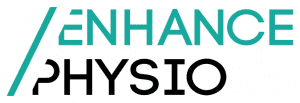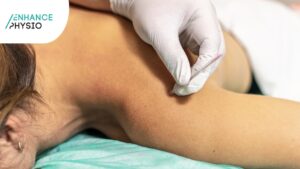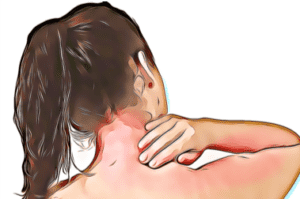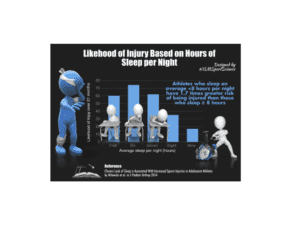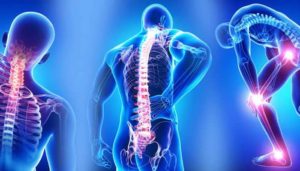Cervicogenic headaches are a common cause of chronic headaches that are frequently misdiagnosed. The presenting features can be complex and similar to many common primary headache syndromes.
The great news is that any headache caused by neck discomfort can be treated with physiotherapy. A cervicogenic headache can be effectively treated with manual therapy and a therapeutic exercise regimen.
What is a cervicogenic headache?
Headaches are widespread, affecting roughly two-thirds of the population. Tension headaches, migraines, sinus headaches, and cervicogenic headaches are all types of headaches. There are numerous causes of headaches, and each person’s triggers are different.
Cervicogenic headaches are headaches caused by the cervical spine (neck) and its component bony, disc and soft tissue elements. Neck pain may or may not accompany the headache.
This results from an upper cervical spine mechanical disorder or disruption of the upper part of the neck. Any pain-producing structure in the neck could cause these headaches. This can include structures such as the joint, intervertebral disc, nerve root, and soft tissue.
What causes a cervicogenic headache?
The cervical spine is a complex structure made up of seven vertebrae, each connected to the one above and below it, as well as muscles, ligaments, nerves, and blood vessels.
Cervicogenic headaches are caused by compression of the top three cervical vertebrae. Sustained postures, such as prolonged sitting at a desk or computer, overactive or tense muscles, and trauma can all cause compression.

Common symptoms of a cervicogenic headache
A cervicogenic headache is characterised by unilateral pain, ipsilateral diffuse shoulder pain, and arm pain.
Typically, these types of headaches may display one or several of the following characteristics:
- One-sided pain originating from the base of the skull/neck travelling up over the head and to the eye.
- Restricted neck movement.
- Onset of headache associated with neck movement or sustained head postures.
- Neck pain.
- Headache eased by interventions aimed at the neck.
- Range of motion in the neck is reduced, and pain is relieved with anesthetic blockades.
- Headache worsens with specific cervical movements and direct pressure applied to specific areas of the neck.
Our 3 step physiotherapy approach
- Manual therapy – To reduce pain, joint stiffness and muscle tightness.
- Targeted therapeutic exercise – To improve range of movement, provide symptomatic relief and increase muscle strength and endurance.
- Education – To help avoid or modify aggravating factors or triggers and to assist in understanding your specific contributing factors.
Physiotherapy treatments for cervicogenic headache
Consider consulting with one of our qualified physiotherapists if you are experiencing symptoms associated with this type of headache. Several assessments will be performed around your neck and head to determine whether your condition can be managed with physiotherapy intervention.
Treatment may include, but is not limited to, the following:
- Postural adjustment
- Mobilisation of the cervical joints
- Dry needling
- Massage of the soft tissues
- Acupuncture
- Neck musculature development
- Guidance on contributing circumstances
How to avoid recurring cervicogenic headaches
Workplace demands and home activities predispose you to develop bad habits and posture. These guidelines will assist you in avoiding injury, improving your posture, and lowering your risk of developing a cervicogenic headache:
- Turn your head in each direction repeatedly during the workday. Use full body rotation rather than just neck rotation. A rotating office chair or stool can be helpful in this regard.
- Bend at your knees and squat to the floor rather than bending at your back if you must repeatedly lift or lift heavy objects such as boxes. Bending at the knees helps to keep your spine in a more neutral and safer position, resulting in better posture.
- Anytime you are required to lift objects, keep the object close to your body to reduce strain on your spine.
- Avoid sitting for long periods of time at home on soft couches or chairs that encourage poor posture. Sit on a firmer surface with a lumbar roll instead for better spinal alignment.
- When sleeping on your back or side, use no more than one pillow to keep your neck neutral and not curving to either side. Sleeping on too many pillows can cause your head to shift forwards or to the side, putting strain on your neck throughout the night.
Taking these precautions along with physiotherapy can manage cervicogenic headaches effectively.
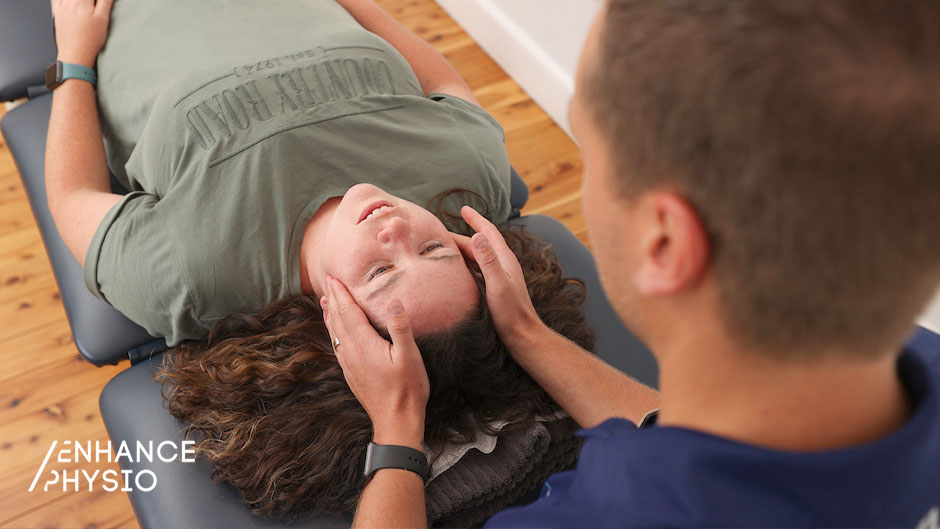
Final thoughts on cervicogenic headache
Physiotherapy is very effective in relieving cervicogenic headaches.
Cervicogenic headaches, unfortunately, tend to reoccur and can have a significant impact on quality of life.
Our team at Enhance Physio have years of experience in cervicogenic headaches. We can tailor an individualised plan for you to alleviate your pain and ensure long-term solutions are implemented.
